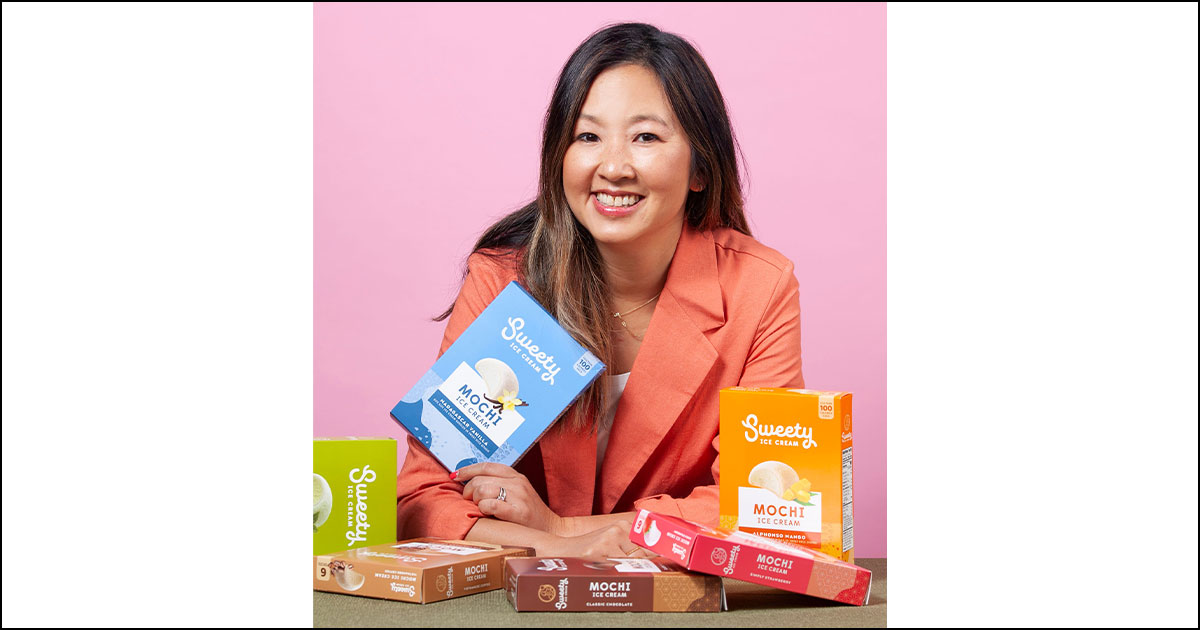Mochi Magic
The Origin Story of Sweety Ice Cream

Last Updated: By TRUiC Team
Even if you’re an ice cream fanatic and think you’ve tasted it all, there’s a decent chance you haven’t tasted mochi ice cream. Sweety Ice Cream describes this Asian treat as “bite-sized ice cream bundles in sweet rice dough,” which sums it up nicely. You actually bite into (and can even chew) mochi ice cream, which provides an entirely different experience than what many people are used to.
The founders of Sweety’s started their company to bring the mochi experience to the American masses. This is Sweety’s origin story.
Not a Typical Ice Cream Parlor
Tiffany Yang is the co-founder of Sweety. Like many entrepreneurs, she never thought she was going to be one.
“I worked in investment banking in probably my first job, somehow then found my way into business school, transitioned into marketing, and ended up working in a strategy slash strategic insights role at various companies in Southern California, including Vans, Mattel, Taco Bell, Neutrogena,” she says. “And then, somehow, I found myself being the founder of a mochi company. Pretty unexpected, but, you know, selling ice cream is not the worst thing in the world [and] makes everybody happy.”
Tiffany’s aunt and uncle actually launched the initial iteration of Sweety in 1978 as a shaved ice cream shop in Monterey Park, California. “Back then, importing and access to Asian flavored ice cream really was not what it is today,” she says. “My aunt and uncle really wanted to find the flavors that they grew up with, the red bean ice cream, the matcha ice creams that they remember from Taiwan. And it was hard to find. And so they said, well, let's just figure out if we can somehow make it.”
She remembers helping with the family’s business as a child. Around 2018, her aunt and uncle were ready to retire and close the company, which was losing money at the time. But Tiffany and her other family members didn’t want to see it die. “We have such fond memories of growing up as kids working in the business,” she says. Over the objections of her aunt and uncle, who wanted them to have “real jobs,” they not only kept the company going but grew it to the nationwide business it is today.
More Than Dessert
Sweety describes its confection as “so much more than just dessert… an unexpected surprise and delight, a joyful little ice cream jewel in your hand, a quick pop of color and sweetness on an otherwise ordinary day, a sublimely satisfying three-bite delight.”
Marketing-speak or not, they aren’t wrong that mochi is different from something you’d get at an ordinary ice cream parlor. It’s a traditional Japanese treat with a California twist. The company uses locally sourced milk to create creamy ice cream in intense flavors like Matcha Green Tea, Azuki Red Bean, Alphonso Mango, and Ube Purple Yam. There are ordinary flavors as well, like vanilla, coffee, and chocolate, but the more unusual flavors take center stage.
That aside, the main difference between mochi ice cream (from Sweety’s or elsewhere) and the standard Western variety is that mochi is bundled in soft, chewy rice dough. This produces an entirely different mouth feel than most Americans expect; each bite is a little package of goodness that you chew and savor.
Sweety’s is sold in stores across the US. Using the company’s retailer directory on its website, this writer found 10 in the Washington, D.C. area where he lives, so chances are there’s at least one close to you.
Don’t Take ‘No’ for an Answer
Tiffany’s advice to early-stage entrepreneurs is to ignore the inevitable naysayers. “You're gonna hear a lot of no's, and we still hear no's all the time. You just have to be persistent and keep knocking on doors … Even if they say no the first time, we keep going back [at] every available opportunity.”
Speaking of networking, she also encourages founders to “lean on people.”
“Be brave and talk to somebody at that network meeting where you might feel uncomfortable,” she says. “We've all had to get comfortable with learning to network in these spaces. Really just try to find opportunities and [don’t take] that first no for an answer because one day somebody will say yes.”





